Ecommerce business is booming, and there’s no sign of that stopping. In Q2 2020 alone, eCommerce spending skyrocketed up 44.4% compared to 2019. With the advent of new technology, starting an eCommerce business has become easier than ever before.
However, not every eCommerce business is exactly alike. Some business models sell exclusively to other businesses, while others sell to customers only as subscriptions. The business model that best works for your online store will depend on a variety of factors, including your size and target audience.
This guide will take you through the most popular types of eCommerce business models so that you can decide what works best for you. Let’s get started, and see if you can’t build an eCommerce platform to rival Amazon.
Ecommerce Business Model Categories
Before we can get into the exact types of eCommerce business models that exist, we first need to understand the categories that they can be classified into.
1. Business to Business (B2B).
The B2B e-commerce model, or business-to-business, involves transactions made by one business to another. This can include wholesale businesses, manufacturers, and distributors. Anything from business phone systems to office furniture retailers could be considered a B2B business – as long as its primary customer base is made up of other businesses, and not the general public.
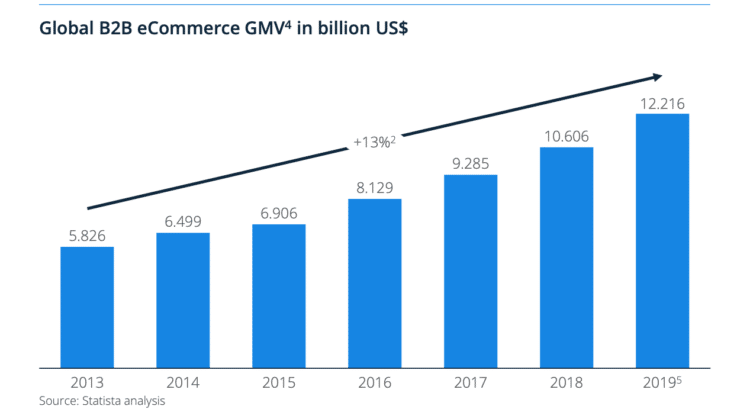
The B2B eCommerce market is growing rapidly, projected to reach over $6.7 trillion by 2020. It’s needless to say that B2B is a highly successful eCommerce model. From software giants like Microsoft and Oracle to technology startups like GitLab and Slack, it’s an expansive industry.
B2B Pros:
- Targeting is easier. Since B2B companies only sell to other businesses, it’s simple to target that specific niche. There are far fewer businesses than there are general consumers.
- Profits are often higher. Many B2B models include wholesale or bulk ordering, which can bring a business high sales numbers with just one order.
B2B Cons:
- B2B is more complex. Because B2B companies sell to other businesses, they’ll need to have software that supports a business’s specific product needs.
- Startup costs can be higher. To get other businesses on board with your products, you’ll need enough stock to meet the demands of a business and quality to keep them coming back.
Quick Tip: B2B customers want more personalisation, so deliver that on social media Click To Tweet
2. Business to Consumer (B2C).
The most popular and well-known eCommerce business model, B2C (or business-to-consumer) eCommerce involves a business selling products or services to the general public. Specifically, the business sells to a specific niche of consumers interested in their product.
Less complex than a B2B set-up, any consumer can order products directly from a B2C company’s website. B2C eCommerce also differs from B2B in order size – instead of frequent large orders, a B2C company will be based more on small to mid-sized sales. Most B2C websites will actually be procuring merchandise from B2B suppliers to sell to their end consumers.
Clothing stores like Forever 21 have shifted entirely to eCommerce, while other B2C businesses like Chewy have always existed solely online.
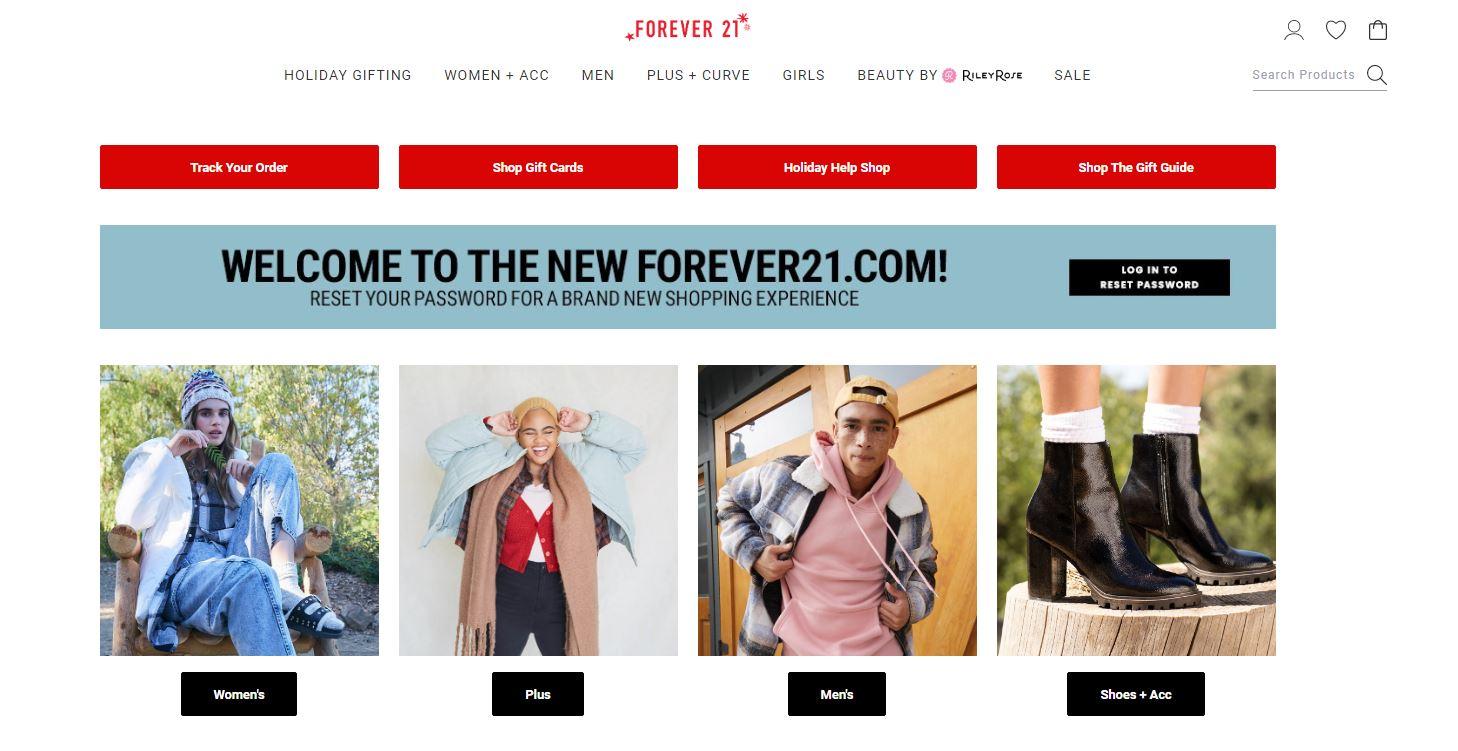
- The customer base is large. Rather than selling to other businesses, your customer base could include anyone that may be interested in your product.
- Startup costs are lower than brick-and-mortar. Being an online-only business comes with the benefit of not having to spend money on a physical store location.
B2C Cons:
- Competition is high. There are currently more than 7.1 million online retailers in the world, with 1.8 million in the United States alone. Many of these follow the B2C model.
- Profit margins can run low. Because most orders on B2C websites are small when compared to B2B companies, the profit margin from B2C sales can feel low.
Quick Tip: The key to success in B2C is to sell something unique that solves a problem or fulfils a need otherwise left unsolved. Click To Tweet
3. Consumer to Business (C2B).
C2B, or consumer-to-business eCommerce, involves creating a website that caters to consumers selling products or services to businesses. This eCommerce model typically serves freelance service providers, such as graphic designers, writers, software developers, and any other individual who has a skill that businesses want.
A C2B website will provide that consumer with an outlet to sell their services and a way for businesses to find the services they need. C2B companies make a profit by charging fees for using the website and keep a portion of the sale made from both the business and consumers.
Some of the most popular examples of C2B eCommerce websites would be Upwork and Fiverr, both of which act as platforms for freelancers to offer their services to businesses.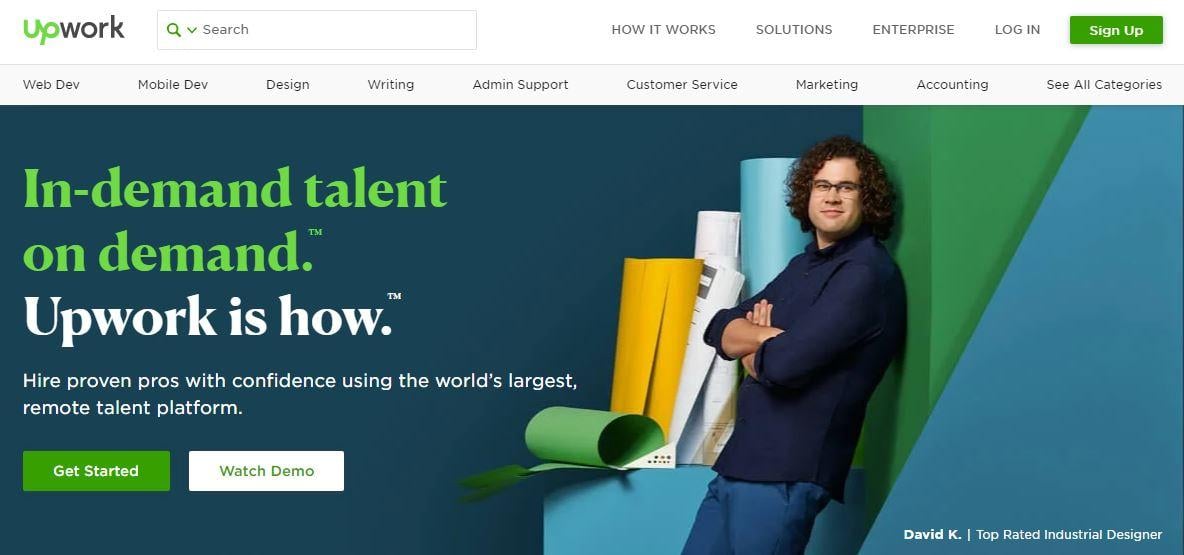
C2B Pros:
- There are little to no overhead costs. All that needs to be created by the C2B business is the website and software necessary.
- Consumers do the selling for you. While you will need to market your C2B website, consumers selling their services to other businesses will also be marketing themselves so that they can make a profit.
C2B Cons:
- Your users define your quality. If the consumers using your website to sell to businesses are getting bad reviews or aren’t providing quality work, then that can reflect poorly on your website.
- Success won’t be instant. While this can be said for every eCommerce model, it may take even longer for a C2B business to turn a profit because it relies entirely on users coming to the website and selling their services.
Quick Tip: Start with influencers that can vouch for your website and provide them with discounted access to it. Click To Tweet
4. Consumer to Consumer (C2C).
In C2C or consumer-to-consumer websites, consumers sell to and buy from each other using the site as a platform or online marketplace. A C2C website would provide a service that enables customers to sell and buy from others. In this model, the website would turn a profit from charging sellers listing and transaction fees.
Additionally, C2C websites can profit from seller ad placements. Like C2B websites, your business would act as a third-party for transactions between two parties.
The most popular examples of C2C websites would include classic marketplaces like eBay and Craigslist. More recently, app-based marketplaces like Mercari, Offerup, and Depop have also entered the C2C eCommerce landscape.
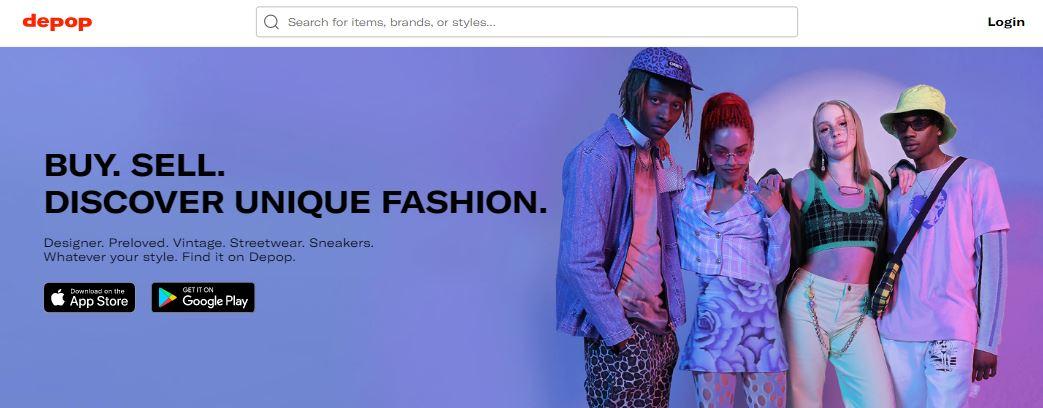
C2C Pros:
- There is little to no overhead cost. Like a C2B website, the only product you’re providing is the ability to use your website to buy and sell. So, you’ll only need to invest in an effective website and powerful software to back it up.
- Buyers and sellers will find their own advantages. For buyers, the cost to sell products on your platform may be much lower than if they had their own website. For sellers, they can find what they need at better prices.
C2C Cons:
- Consumers expect protection. Your website will need software and policies in place to protect both buyers and sellers in transactions. This means that you may need to front the cost of a refund if a seller on your site isn’t sending products out to customers.
- Competition is rising. Your C2C business would be competing with the likes of eBay and Mercari, so it may be hard to gain sellers and buyers.
Quick Tip: Target your C2C business towards a specific niche, rather than accept any product or service. Click To Tweet
5. Direct to Consumer (D2C).
A popular new choice for wholesale companies is the D2C, or direct-to-consumer, eCommerce model. In D2C eCommerce, the “middleman” retailer is cut out of the buying equation. This means that customers will be buying directly from the manufacturer of the product, rather than a B2C or B2B retailer that may have bought wholesale products from the manufacturer to sell at a profit.
Customers are flocking to D2C businesses because prices are typically lower due to the lack of a retailer making extra profit. In fact, research shows that 55% of consumers prefer to make purchases directly from the manufacturer’s website.
Ecommerce stores like Casper and Away manufacture their own products—mattresses and luggage, respectively— and sell it directly to customers.

D2C Pros:
- You can offer competitive pricing. Because you’re the manufacturer, you can offer products at lower prices than B2C retailers.
- Contact with customers is more direct. Boost your brand’s visibility and develop customer relationships without relying on retailers.
D2C Cons:
- Transitioning to D2C takes work. If you’re used to B2B sales, then you’ll need to take the time to transition your business and team to D2C.
- Partnerships with retailers may suffer. Retailers may not take kindly to your direct consumer sales because it may take away from their own sales.
Quick Tip: Work to understand what your customers want from your business and provide affordable solutions to those pain points. Click To Tweet
Types of eCommerce Business Models
Now that we have a basic understanding of how eCommerce business models are classified let’s get into the types of business models most frequently used by online stores.
1. The Wholesale Business Model.
Wholesale is the most common form of B2B eCommerce. As a wholesale eCommerce business, you would be manufacturing products and selling them at wholesale prices to other businesses. Products are usually sold in large bulk quantities at a discount, to be sold on by B2C retailers.
However, a wholesale business can also classify as D2C if it sells products directly to consumers, as well. Many wholesaling eCommerce websites do both with great success, including marketplaces like Alibaba and AliExpress.
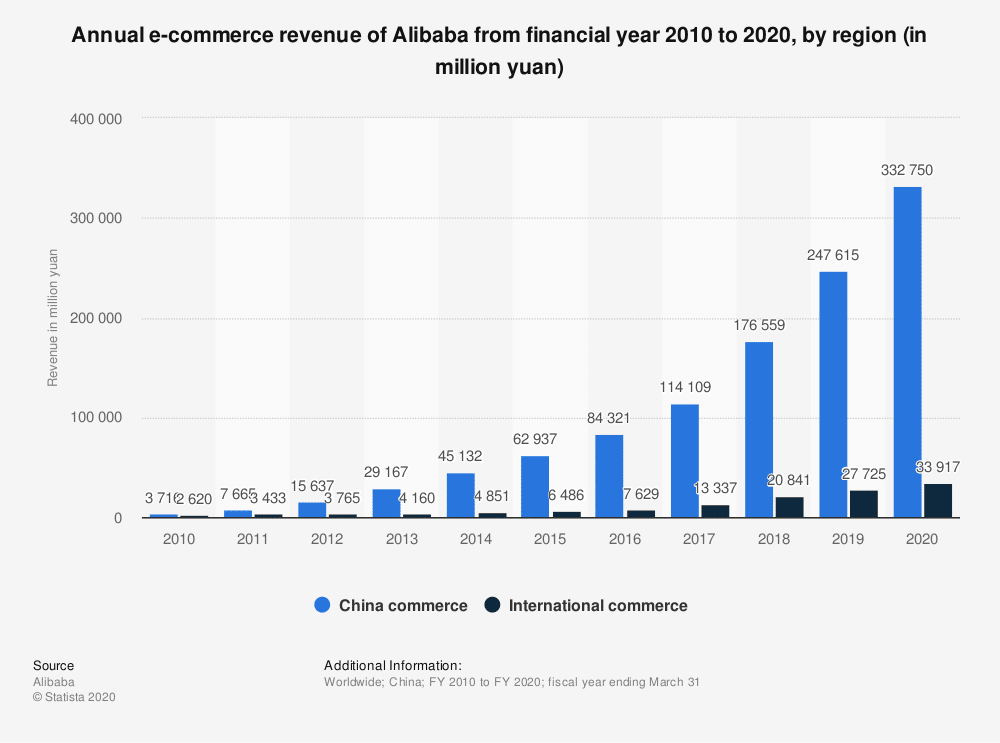
Wholesale Pros:
- Profits can run high. With larger average order values can come higher profit margins from each order – especially if you’re manufacturing products yourself.
- Retailers do the marketing for you. Because you’re not directly selling to consumers, you can rely on retailers to market your products to them.
Wholesale Cons:
- Wholesale overheads can be huge. Make sure that you have the capital to invest in manufacturing at a wholesale level.
- It would be best if you had a large, effective team. When working with large-scale business models, you need properly trained employees to back that up.
Quick Tip: Work on making your supply chain efficiency in eliminating any costly errors or redundancies. Click To Tweet
2. The Dropshipping Business Model.
Dropshipping is, by far, the newest popular eCommerce business model. This model is a form of B2C wherein the online store sells products to customers, but the supplier fulfils the order. The retailer doesn’t handle or store any products, and the customer receives their order without knowing about the third-party supplier involved.
Once an order is placed on a dropshipping store, it’s sent to the supplier, who will package and ship it to the customer. Because the supplier takes care of fulfilment, dropshipping requires store owners to work closely with distributors to guarantee a positive customer experience.
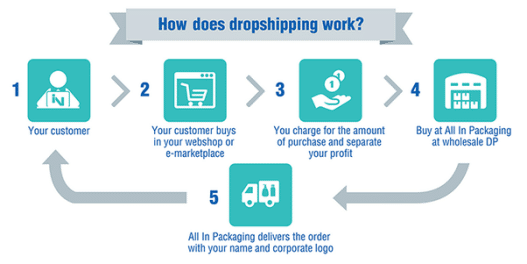
Source: Chinabrands
Dropshipping has become a popular eCommerce business model for small businesses looking to get started in eCommerce. Ecommerce giant Wayfair actually started as a drop shipper, and still dropship 95% of their products.
Dropshipping Pros:
- There is little to no upfront cost. All you’ll need to invest in is a website, eCommerce software, subscription to a dropshipping supplier, and marketing. You don’t have to worry about inventory management, warehousing, etc.
- Product lineups can be switched up easily. If a product you’re selling on your online store isn’t converting, you can easily switch it out for a different product with no loss to you.
Dropshipping Cons:
- Your business has less control. Since the entire storage and fulfilment process is done by a third-party, errors in that process may be out of your control – your customer service needs to be perfect.
- The competition runs high. Hundreds, or even thousands, of other stores, could be sourcing and selling the same product as you from the same dropshipping supplier.
Quick Tip: Take the time to research products that have low competition and a high potential for branding to differentiate your business as much possible. Click To Tweet
3. The Subscription Business Model.
Ecommerce companies that use a subscription model offer a product or service to customers that can be automatically ordered regularly. Typically paid for monthly or yearly, subscriptions can be anything from physical products to streaming services. Subscriptions can run until cancellation or end automatically if not renewed.
The subscription model has skyrocketed in popularity as of late, with streaming giants like Spotify and Netflix taking over the industry. Successful startups like Dollar Shave Club and BarkBox send out monthly subscription boxes to their customers, whether it’s to refill a customer’s stock of razors or to introduce customers to mystery pet products.

Subscription Model Pros:
- Abandonment rate is low. Subscriptions make recurring orders extremely convenient for customers, keeping them as your customers for longer.
- Customer loyalty is easier to foster. With regular products delivered to their door every month or quarter, your brand has much more time to develop a close relationship with your customers.
Subscription Model Cons:
- The regular stock of items is necessary. To fulfil subscriptions, you’ll need to consistently have the amount of stock necessary to match your sales numbers. If you have low stock, you may sell out quickly, which can have a negative effect if you’re a newer business.
- Customers may lose interest. If your subscription isn’t providing something new and exciting to customers regularly, your product may get old. This could lead customers to search for a competitor instead.
Quick Tip: Choose products that are a mixture of evergreen and trendy to stay relevant but also remain reliable. Click To Tweet
5. The White-Label eCommerce Business Model.
When a product is “white-label”, this means that it has been manufactured by a third-party and rebranded with the business’s own packaging. A white-label eCommerce business agrees with a manufacturer to sell their products, but only if their brand is on it. The manufacturer may sell that same product to other retailers, who are also rebranding it with their own name and logo.
So, in this situation, the end-consumer is not aware of the original manufacturer. This makes white labelling similar to the dropshipping model, but much more involved.
Products, services, and software can be white-labelled. For example, 3dcart offers a white-label eCommerce solution that can be rebranded by the agency selling that software.
White-Label Pros:
- Production costs are lowered. Because your brand won’t be physically manufacturing the product, and just branding it, you won’t need all of the production equipment required to produce it.
- Brands can grow quickly. With a large amount of product able to be produced quickly, and with your branding, visibility of your business can expand rapidly.
White-Label Cons:
- Quality can be inconsistent. The white-label brand that you’re working with may not follow the same quality control standards that you desire for your products.
- This can be expensive for small businesses. Purchasing, repackaging, and relabeling massive amounts of the product may be cost preventative for small businesses with fewer employees or capital.
Quick Tip: Ensure that your manufacturer’s products match the quality that you want your brand to represent. Click To Tweet
Conclusion
Ecommerce can take many shapes and sizes, from a small dropshipping business to an enterprise-level wholesale manufacturer. This guide should have taken you through how each classification and model works, and the benefits and drawbacks of each. Now, it’s time for you to determine what model best fits your own online business plan.

Originally published Dec 08, 2020, updated Jan 16, 2023



